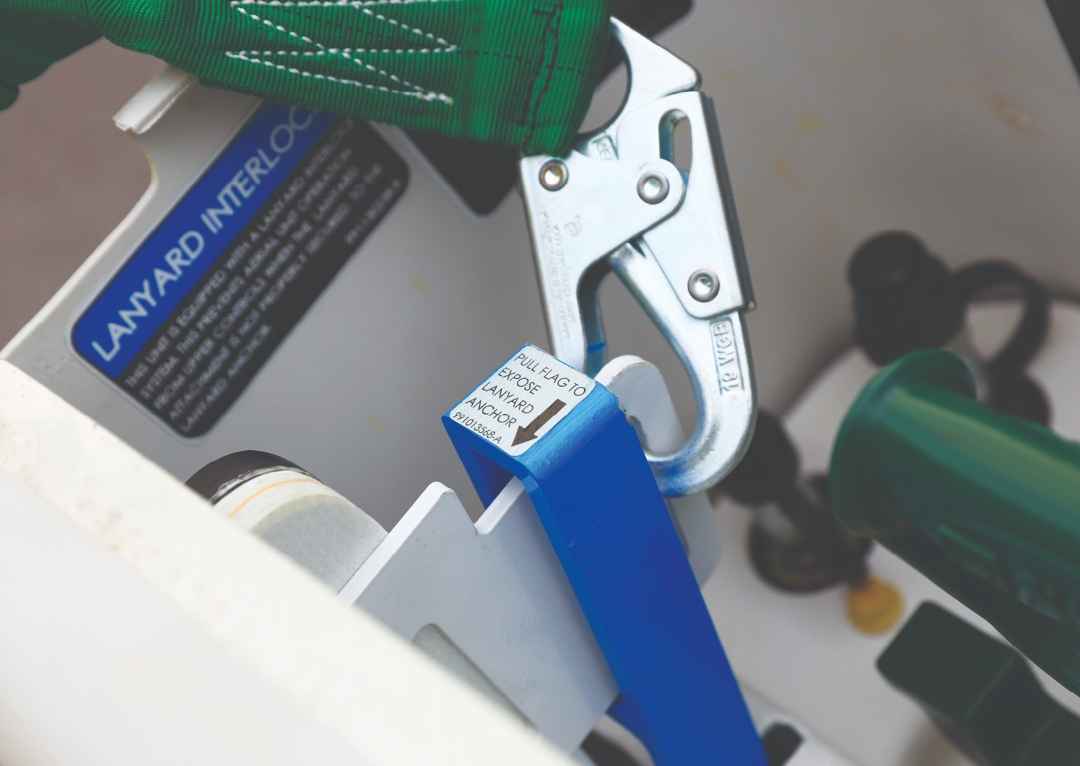
As regional vice president at Altec, John Bistritz has a unique view of the issues facing utility and telecom fleets. His involvement with the industry also provides an opportunity to help the manufacturer and its customers find viable solutions to those challenges.
“Electric utilities are facing more demand for energy to power vehicle electrification and communications and information technology initiatives,” Bistritz said. For telecoms, challenges include deploying fiber networks, rolling out 5G wireless communications systems and providing rural broadband capabilities.
“Electric utilities are also facing the need to upgrade and support their infrastructure,” Bistritz continued. “Grid reliability expectations are higher while they’re encountering a much higher frequency of more severe weather events that impact service.”

All that activity, Bistritz noted, means utility and telecom fleets need more vehicles and equipment that is more productive and efficient. In addition, with fewer people entering the workforce, they are facing a shortage of personnel who are interested in doing this vital work.
An equipment issue facing utility and telecom fleets, and one that will impact capital budgets, is the desire for more environmentally friendly vehicles to support sustainability initiatives while manufacturers also work to address regulations.
“The Advanced Clean Truck mandate that requires medium- and heavy-duty vehicle manufacturers to sell an increasing percentage of zero-emission vehicles has already been adopted by five states and is expected to become law in others,” Bistritz said. “Then there are the upcoming 2027 EPA (Environmental Protection Agency) emissions standards. Both initiatives will most certainly drive up the price of new vehicles.”
Bistritz also noted that environmental regulations led to pre-buy activity for 2025 models among utilities and telecoms last year. He added that the expectation is that pre-buying will continue at the end of 2025 as fleets seek to source 2026 model year equipment.
“While manufacturers are positioned to meet the higher level of earlier than usual demand,” Bistritz said, “knowledge of the changes in these vehicles is not 100% widespread. The industry still needs to understand the impact of these regulations. Fleets would be advised to reach out to suppliers for resources and education.”
Minimizing Jobsite Idling
Another equipment challenge for fleets related to both costs and the desire for more environmentally friendly operations is how to address jobsite idling. “Much of the equipment used by utilities and telecoms can spend more time idling than driving,” Bistritz pointed out. “Systems and solutions that minimize idling mean burning less fuel, which reduces emissions. Less idling also cuts wear and tear and lowers repair costs. This allows for more predictive maintenance, and less downtime makes the fleet more productive.
“There are also benefits from reducing noise when vehicles and equipment are not idling on jobsites,” Bistritz continued. “Aside from quieter operations in neighborhoods during construction and restoration work, less noise leads to improved safety because multi-person crews are better able to communicate.”
Technology Advancements
All the factors facing utility and telecom fleets are driving product and technology development among manufacturers of vehicles and equipment, Bistritz noted. At Altec, several equipment and technology advancements serve as examples:
The new Altec AC65E-155S dual-rated telescopic boom truck crane is designed to improve operational productivity by offering material handling capacity as well as personnel lifting capabilities. It can also be configured to comply with federal bridge laws, meaning it can travel without permits.
The unit features 130,000 pounds of maximum lifting capacity with a six-section, 155-foot main boom, can reach a working height of 215 feet and has an available side reach of up to 110 feet with a 1,200-pound two-person platform when configured as an “American National Standards Institute (ANSI) A92.2 compliant non-insulating aerial device.

To help fleets address emissions and noise pollution and lower fuel cost and operating expenses, Altec has expanded its Jobsite Energy Management System (JEMS) from its application on aerial devices with the JEMS BG (Body/Generator) solution. Designed for gas utility applications using step vans at underground vaults, JEMS BG supplements on-board diesel generators with advanced lithium-ion batteries to supply power for tools and equipment.
Using an advanced control system, JEMS BG automatically switches between battery and generator, only running the generator when necessary to recharge the batteries. The JEMS BG can use Level 1 and 2 plug-in charging options and has battery warming technology for cold climates.

For safety, Altec has developed a lanyard detection system that helps reduce the risk of falling from the platform. The system is expected to meet ANSI mandates for lanyard detection, anticipated in 2027.
These systems are available in lanyard alert and lanyard interlock configurations. Lanyard alert detects if the lanyard is not attached and sounds an audible alarm at the platform. The lanyard interlock system disables upper controls if the lanyard is not detected, in addition to sounding an audible alarm.
Connected technologies from Altec are helping improve jobsite and equipment performance. With Altec Insights, users can remotely view unit diagnostic trouble codes (DTCs) and vehicle and equipment status and enable remote troubleshooting. Vehicle status information includes the parking brake, PTO and outrigger interlocks. DTC details on potential equipment faults can help detect temperature and pressure sensor problems, joystick faults and slip ring communication issues.
Op-Ready, a digital solution from Altec Fleet Services, is designed to help reduce unplanned downtime. Without requiring additional hardware or software on existing connected equipment, the system monitors chassis and unit data and alerts users to any issues. Op-Ready reports can be configured to provide data on an entire fleet, a group of assets or an individual unit.
“The knowledge and industry insight that manufacturers have about best practices and effective approaches are what addresses the challenges that utility and telecom fleets are facing,” Bistritz said. “We use the experience of many different types of operations to provide best-in-class products, technologies and services and to meet our customers’ needs.”